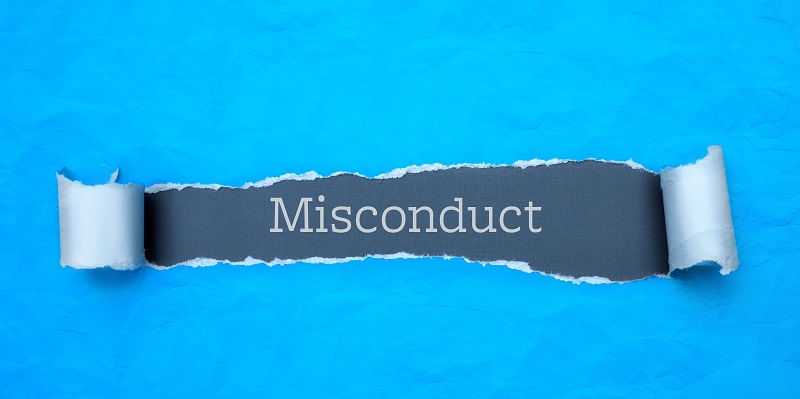In today’s dynamic and diverse workplaces, addressing and preventing workplace misconduct is of paramount importance. Research has shed light on the common courses of action that employees take when they experience or witness ongoing misconduct. This article delves into the impact of harassment or misconduct on employee retention, the social multiplier effect of misconduct, its consequences on employee morale, productivity, and turnover, as well as the prevalence, types, and range of misconduct found in various industries. Moreover, this article provides valuable strategies for HR and recruiting professionals to safeguard their organizations and employees from the damaging effects of misconduct.
Common Courses of Action Taken by Employees in Response to Misconduct
When faced with misconduct at work, employees have various courses of action they might take. Research suggests that some employees may choose to stay but become perpetrators of misconduct themselves, perpetuating a cycle of unethical behavior. This unsettling trend highlights the urgent need for proactive measures to address misconduct and foster a culture of integrity and respect.
Impact of Harassment or Misconduct on Employee Retention
A recent study has reported that a staggering 57% of employees cited harassment or misconduct as the primary reason they left their positions or as a contributing factor in their decision to leave. These findings emphasize the indispensable role of preventing and addressing misconduct in mitigating high turnover rates and retaining valuable talent.
Employees Engaging in Misconduct Themselves
Notably, research has revealed that individuals who are exposed to or experience misconduct firsthand are more likely to perpetrate misconduct themselves. This alarming phenomenon underscores the urgency of promptly addressing misconduct through appropriate channels and implementing preventive measures to break this destructive cycle.
The Social Multiplier Effect of Misconduct
One concerning aspect of misconduct is its social multiplier effect, whereby each instance of misconduct generates an average of 0.59 additional cases of misconduct. This ripple effect signifies how a single case can quickly escalate and tarnish workplace culture. Volatile workplace situations require thorough investigations and immediate intervention to halt the spread of misconduct and prevent widespread harm.
The impacts of misconduct on employee morale, productivity, and turnover are significant
Surprisingly, research demonstrates that even a small percentage of workers engaging in misconduct can have a profound impact on employee morale, productivity, and turnover. The toxic atmosphere created by misconduct corrodes trust, hampers collaboration, and stifles creativity. Companies must prioritize creating a safe and inclusive work environment to avoid compromising their bottom line and reputation.
Research Findings on the Prevalence of Misconduct
Fama’s research last year revealed that a concerning 11% of candidates screened had prior instances of misconduct. This statistic highlights the need for comprehensive screening processes to identify potential risks and ensure a thorough understanding of a candidate’s background, ethics, and values.
Range and Severity of Misconduct Found
The types of misconduct uncovered in screening processes ranged from seemingly minor infractions, such as cannabis use, to significantly harmful violations and crimes like workplace violence and hate crimes. The wide spectrum of misconduct reinforces the importance of vigilance in ensuring a safe and respectful work environment.
Industries with Higher Rates of Misconduct
Disturbingly, more than half of the industries surveyed reported that over 20% of candidates screened had displayed some form of misconduct. Sectors such as finance, technology, and hospitality were particularly affected. It is crucial for organizations within these industries to implement robust policies, training, and monitoring systems to effectively address and prevent misconduct.
Most Common Types of Misconduct
Harassment, sexual misconduct, and intolerance were identified as the most prevalent forms of misconduct reported in the past year. Vigilant enforcement of comprehensive anti-harassment policies and fostering a culture of inclusivity and respect can help mitigate these pervasive issues.
Strategies for Safeguarding Organizations and Employees from Misconduct
To curb misconduct, HR and recruiting professionals need to play a pivotal role in safeguarding organizations and employees. Some strategies include implementing rigorous background checks, enhancing ethics training programs, establishing anonymous reporting mechanisms, conducting regular assessments of workplace culture, promoting diversity and inclusion, and fostering open lines of communication.
Addressing and preventing workplace misconduct is crucial for fostering a safe, inclusive, and ethical work environment. The research discussed here highlights the significant impact of harassment and misconduct on employee retention, morale, productivity, and organizational reputation. By adopting proactive strategies, organizations can break the cycle of misconduct, strengthen their culture, and attract and retain top talent committed to upholding integrity and respect in the workplace.

